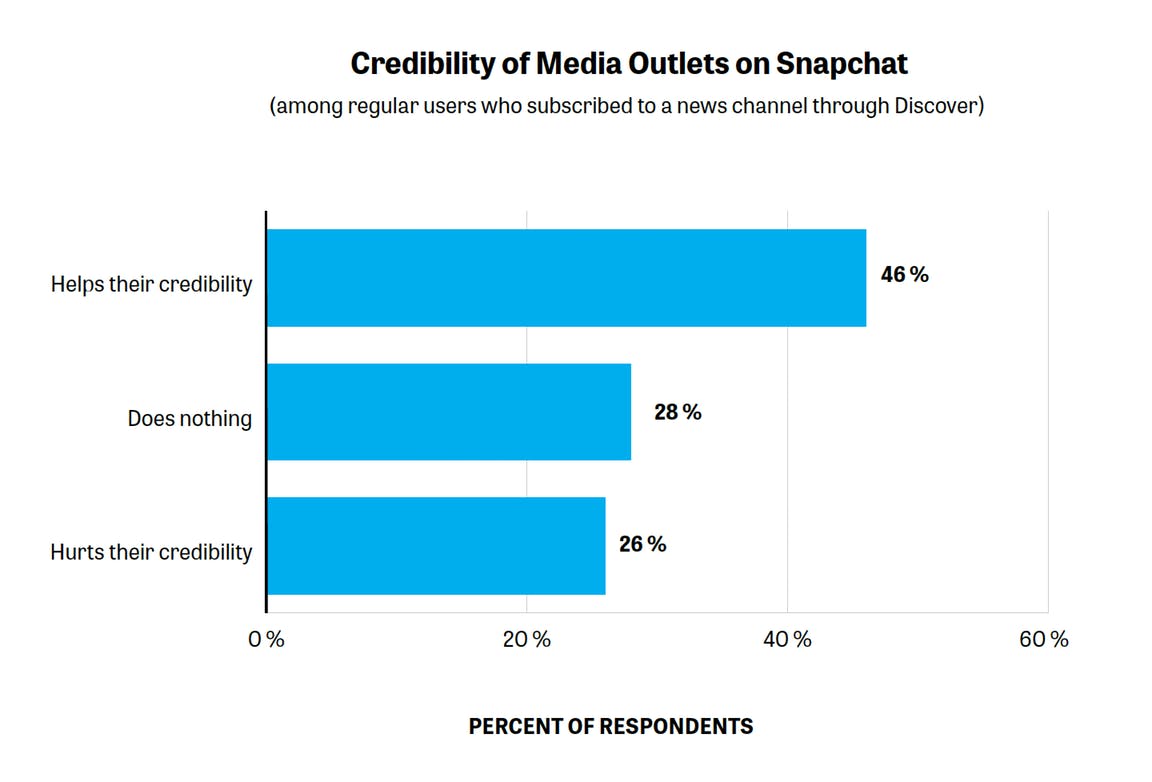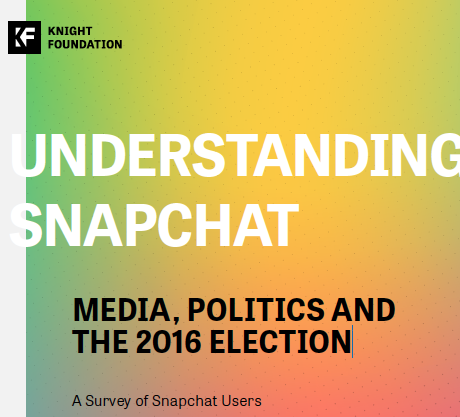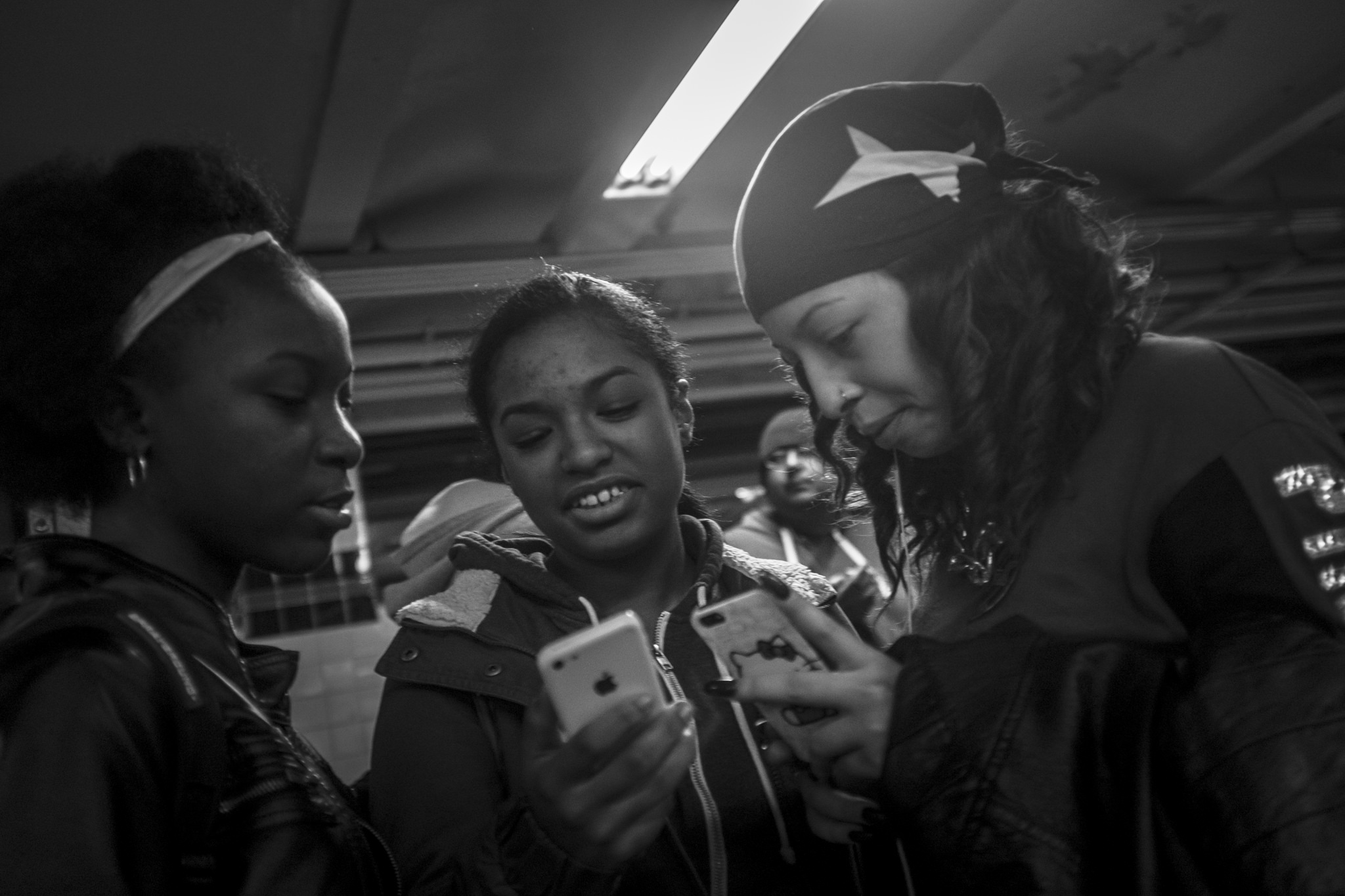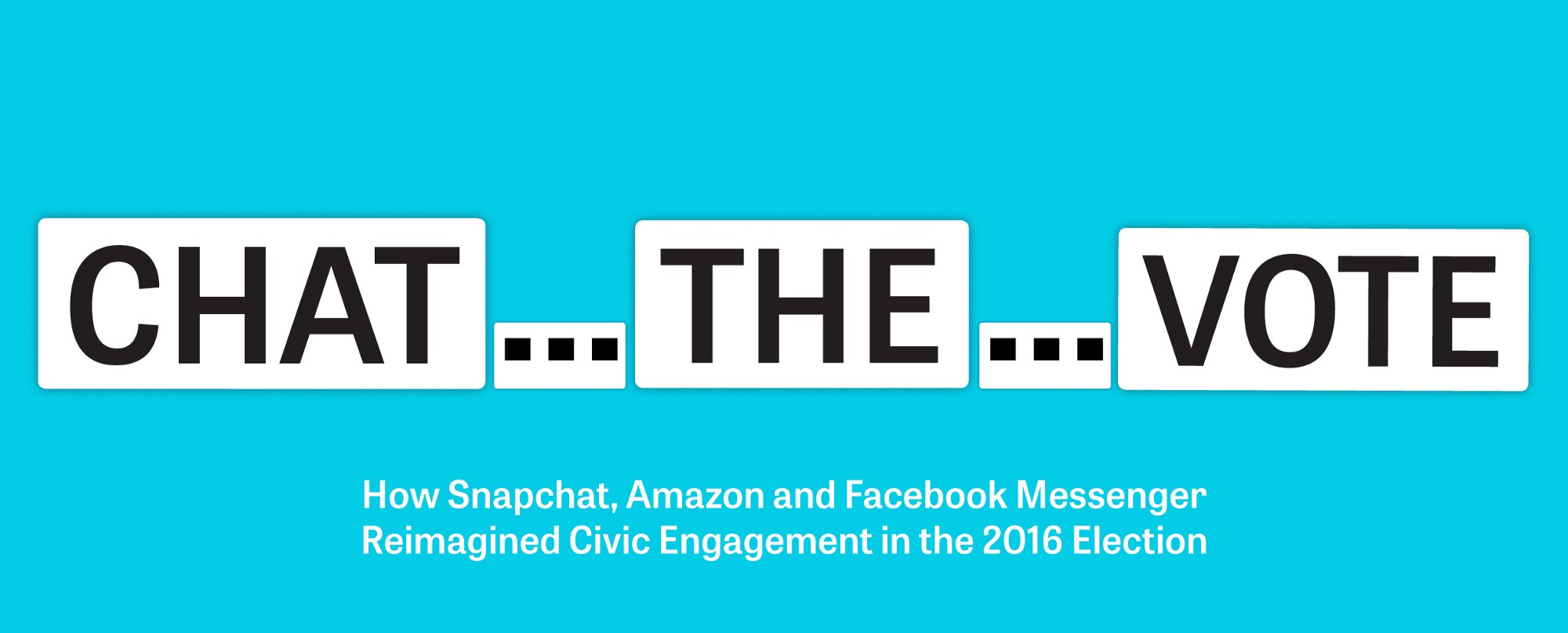
Survey of Snapchat users shows that distrust in the media is not so simple
Natalie “Talia” Stroud, director at the Engaging News Project at the University of Texas at Austin, and Luz Gomez, director of research at Knight Foundation
During the 2016 presidential election, news organizations and political candidates had more ways than ever to directly connect with audiences and voters. Social platforms like Snapchat have become increasingly popular, especially with young people—an average of 2.5 billion “snaps” are created every day. But little is known about how a platform like Snapchat is being used for news and politics—and how people perceive the journalists, politicians and news organizations experimenting with it.
At the Engaging News Project, we are always interested in learning about different strategies for people to engage with one another, and with news and politics. For our latest project with Knight Foundation, “Snapchat, Politics and the 2016 Election,” we sought to learn more about how Snapchat was used in the run-up to Election Day.
We conducted our survey of 977 regular Snapchat users in the week before the general election. Respondents posted often; about a third post stories daily or more.
Our results showed that only about a third of respondents follow news organizations or political figures on Snapchat. However, that doesn’t mean users aren’t exposed to news and politics: In the month before the election, more than two-thirds of regular Snapchat users said they watched content about political debates and live news. Plus, 38 percent said they learned something new about the presidential election while using the app. This is important when thinking about meeting young people where they are; Nielsen found that 41 percent of millennials can be reached via Snapchat.
With declining levels of trust in institutions such as the news media, we explored the extent to which Snapchat use affected perceptions of trust. And we found something interesting: The survey showed that Snapchat users thought that the app increased perceptions of trust and credibility. About half of respondents who follow news media or journalists on the app see Snapchat as helping media and journalists’ credibility (46 and 50 percent); about a quarter said it hurts their credibility and another quarter thought it did nothing for credibility. We saw similar findings when it came to questions about politicians’ credibility.

What explains the finding? It could be that people feel that they can trust journalists and politicians when they can connect with them directly and see them through live video, rather than reading a tweet or seeing a photo. Interestingly, recent focus groups with young people conducted by Knight Foundation and Data & Society on digital news consumption, surfaced younger Americans’ attitudes in this area. Young news consumers often consider user-generated content—especially live video—to be more trustworthy than typical mainstream media sources.
Perhaps the lesson here is a reminder that we cannot think of the media and all social media platforms (or all news consumers for that matter!) as a monolith. While other data indicate that information garnered from social media has abysmal levels of trust, our study of Snapchat users adds nuance to those findings, suggesting that the type of social platform may matter—especially among some younger users.
Snapchat may provide an opportunity for journalists and politicians to connect with their target audiences on a platform where users are more inclined to trust them. It also shows that there is potential for Snapchat and other social apps to think more about the role they can play in helping their users become more civically engaged.
Email Natalie Stroud via [email protected] and email Luz Gomez via [email protected].
-
Information and Society / Report
-
Journalism / Article
-
Information and Society / Report
-
Journalism / Article
Recent Content
-
Journalismarticle ·
-
Journalismarticle ·
-
Journalismarticle ·






